America's Extremely Dumb History Of Falling For Infinite Energy Scams

Back in 1986, Mississippi senators Trent Lott and Thad Cochran introduced bills in support of a self-taught inventor named Joseph Newman. Multiple Republican congressmen followed suit, as did the Mississippi state legislature. Thousands of cheering fans packed into the Superdome to watch a demonstration of Newman's machine, which was going to "change history as no invention has ever done." It seemed like the whole country was going crazy for Joe Newman and his wonderful new machine. Which, to be clear, was a perpetual motion device.
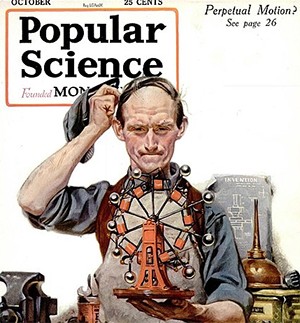
Now, perpetual motion machines are somewhat controversial, mainly because they violate the first and second laws of thermodynamics and are therefore impossible. You might as well claim to have invented a faster-than-light scooter, or a car that runs on impressionism. But that hasn't stopped a fascinating collection of weirdos claiming to have cracked the case, culminating in Joseph Newman appearing before the US Senate to determine whether Congress should override both the Patent Office and physics itself to grant him an official patent.
Don't Miss
In fairness, this wasn't even the first time the Congress was hoodwinked by some loon's perpetual motion machine. In 1917, a guy named Garabed Giragossian announced that he had invented a machine that produced more energy than it consumed. He completely refused to say any more about how the machine worked, claiming that even hinting at the details could allow it to be stolen by hostile foreign powers. This was enough to convince most of the country and Garabed was even summoned to testify before a Congressional committee, where he again refused to say a word about what his machine actually was. Figuring that a scammer would at least make the effort to fake some proof, Congress immediately passed a joint resolution securing the wonder machine for the US government.
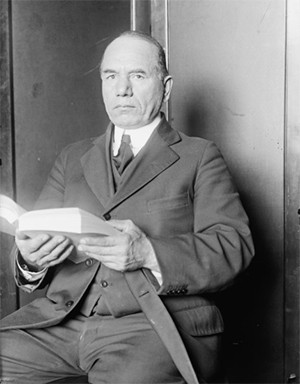
You read that correctly: there is a genuine act of Congress on the books endorsing a random maniac's perpetual motion device, and the story only gets more embarrassing from there. While setting out detailed terms for acquiring the machine, Congress did at least have the sense to make the whole deal conditional on a successful demonstration. The Woodrow Wilson administration was tasked with assembling a team of five scientists to examine the device in a secure facility. If they raised no objections, the United States would move ahead into a glorious future of free energy.
So picture the scene: As World War I rages in Europe, an elite panel of scientists, hand-picked by the president, gather in a top-secret location to witness the mysterious new invention that could change the course of human history. And then they watch in mounting horror as a burly man strides into the room and starts cranking a big flywheel.

If you're not familiar with a flywheel, it's basically just a simple device for storing energy. We invented it in the goddamn Bronze Age. If you played with toy cars as a kid, then you've mastered the mysteries of the flywheel. In Giragossian's case, he let the flywheel build up speed for a while, then suddenly brought it to a stop. This, he proudly reported, released far more energy than starting the wheel in the first place had required. Therefore, energy had been created. He failed to understand that the flywheel was storing energy over time, which was all released in a single burst when the wheel was stopped. Everyone involved slunk away quietly and the entire country agreed not to discuss the unfortunate incident again.
The free energy movement took another blow shortly afterward, when the cops hammered open a safety deposit box belonging to a guy called Louis Enricht, who had been touting a water-powered car to the nation's most gullible millionaires. Henry Ford jumped on a train and went all the way to New York to invest, while the Maxim machine gun company was also interested, but Enricht's main backer was a railroad tycoon named Ben Yoakum. Enricht had enticed Yoakum to invest by entrusting him with a secret envelope supposedly containing the secrets of water-power. But the plan went awry when Enricht was accused of being a German spy. An alarmed Yoakum opened his envelope, which just contained some government bonds bought with his own money.
The inventor's safety deposit box also turned out to be empty of waterbending scrolls, by which point Yoakum was so insane with rage that he tried to have Enricht tried for treason. This failed, since scamming rich people isn't an affront to the entire nation, no matter how much they'd like it to be. Meanwhile, the Enricht and Giragossian disasters barely slowed down the wave of perpetual motion scammers, who only got weirder as time went on.
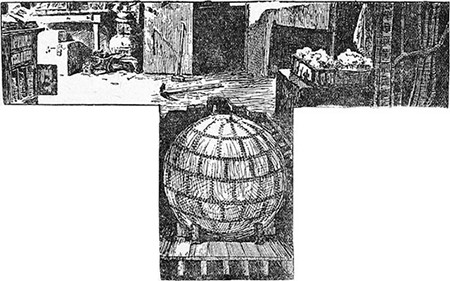
Typical was a guy called Josef Papp, who first entered the historical record when the French military fished him out of the Atlantic Ocean in 1966. Papp claimed to have invented a super-advanced atomic submarine in his buddy's garage, which he had used to sail from Canada to Europe in just eight hours. Sadly, the submarine had sunk without a trace just before reaching France, but it was still an incredible achievement. Or it would have been, had some skeptical gendarmes not discovered a recent plane flight from Montreal to Paris in his name, plus a train ticket from Paris to the beach in his jacket pocket. Remember guys, scams are like laundry: always check your pockets first.
Papp resurfaced in Los Angeles a couple years later, where he touted a perpetual motion engine that could supposedly run a car by fusing helium atoms, something that not even our sun can manage just yet. If somebody emerges from his garage workshop claiming to have become more powerful than the sun, you should either run a mile or instantly swear loyalty to the new Cobra Commander, but Papp quickly began attracting investors. However, a public demonstration failed to impress the crowd, since there was clearly a power cord running into the machine. So Papp unplugged it and handed the cord to a bystander to prove it could run on its own. Unfortunately, that random bystander turned out to be Nobel Prize-winning physicist Richard Feynman, who figured Papp probably just had a small battery in the machine and refused to give the plug back when asked for it. At which point the machine exploded.
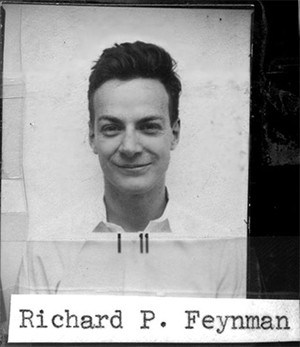
Shrapnel scythed through the crowd, turning the quiet parking lot into a screaming bloodbath. One person died and many more were maimed. Papp sued Feynman for causing the explosion, while Feynman alleged that Papp had planted a bomb to destroy his own machine in order to scam his financial backers. The dispute was settled out of court and Papp went on to take millions from investors to develop his engine. Sadly, a mysterious obstacle always seemed to arise just before he was about to complete his work and repay all their money. On one occasion, he was found wandering in a daze with a bullet in his shoulder, having apparently been kidnapped. Another time, somebody supposedly broke into the lab and sabotaged his machine. He usually blamed Big Oil, although we don't think the mighty Ra should be ruled out.
Also assailed by mysterious problems was Arnold Burke, a Bible-thumping Texan publicity seeker who talked one of the nation's biggest dairy co-ops into investing $150,000 in a hydroelectric perpetual motion device called Jeremiah 33:3. Burke, who wore an eyepatch until miraculously recovering his eyesight during a faith healing ceremony, claimed his machine would cost only 50 cents in grease to run for a year. However, when the time came to unveil the device, Burke produced only excuses, until the cheesed-off dairy's interest curdled and they pulled out of the deal. This all led to a high-profile trial, which went off the rails when the assistant attorney-general noticed a hidden wire running into the machine. The entire court quickly sprung to its feet and followed the wire around the courthouse until they discovered a battery tucked under a bunk.
Burke wasn't the only one fusing religion with the power of perpetual motion. Most notable was a Swiss guy named Paul Baumann, who claimed to have experienced a divine vision while in prison on child abuse charges in the 1950s. Baumann went on to found a religious commune known as Methernitha in the Swiss mountains, where he supposedly perfected a perpetual motion device called the Testatika. The commune keeps the device a closely guarded secret, although free energy believers occasionally seek them out. A Bulgarian physicist reportedly even joined the group to learn the secrets of the device, but was unable to persuade them to share it with the world, and eventually jumped to his death from a library window at Graz University.

By the 1980s, there were so many perpetual motion devices floating about that the US Patent Office had a standing rule not to issue any patents. Which is where Joseph Newman entered the story. Newman was a self-taught inventor from small town Mississippi who had filed a patent application for his "Energy Generation System Having Higher Output Than Input." The energy generation system in question was a 500-pound jumble of copper wire cobbled together in his kitchen, and the Patent Office rejected his application on the grounds that the machine "smacks of perpetual motion." They probably thought that was the end of it. They were very wrong.
Newman was a charismatic showman with an annoying habit of referring to himself in the third person, and as far as he was concerned, the Patent Office turning him down was the greatest injustice in the history of mankind. He completely refused to accept the decision and launched a lawsuit instead, later declaring that "let's say Joe Newman has drawn the line. I have seen an injustice and...I want to fight it vigorously. The people who founded this country would want to fight it vigorously." And in fairness, people often forget that the American Revolution only kicked off because the British refused to give a trademark to George Washington's wind-powered teleportation trousers.
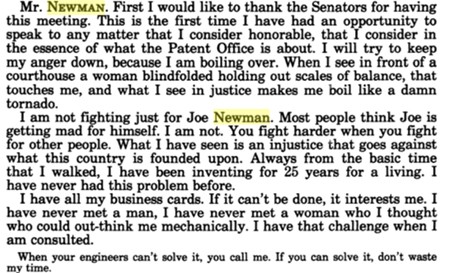
The ensuing legal battle ran for years, with all kinds of bizarre twists and turns. At one point, the judge appointed an engineer as a "special master" to examine the machine, without realizing that the guy had worked for Newman's patent law firm. The special master, apparently feeling no conflict of interest, duly returned with a report fully endorsing the machine, which the surprised judge declined to accept. It eventually ended up being tested at the National Bureau for Standards, which found that it didn't work, only for Newman to counter that they were too stupid to understand his genius and had botched the test. Now at any given moment there are about 1,000 eccentrics suing the government, but in this case something unexpected happened: the country started to rally around Joe Newman.
*Inspiring violin music*
The story of a small town hero stymied by the corrupt bureaucrats in Washington hit some chord in the American soul. CBS News ran a prime-time report calling Newman "a brilliant self-educated inventor" and suggesting his machine could be the solution to America's energy woes. Over 8,000 people paid to attend a demonstration of the machine at the Superdome, cheering wildly as Newman loudly challenged any PhD physicists to come down from the stands and debate him (apparently none were in attendance, so the challenge went unfilled).
Unwilling to miss a chance to stick it to science, the Republican Party quickly jumped on the Newman bandwagon. Influential Louisiana congressman Bob Livingston circulated a memo blasting the government's "persistent refusal to grant Joseph Newman a patent for his energy machine" and suggesting starving the Patent Office of funds until they did so. It was ultimately decided that Congress could simply override the Patent Office and issue Newman a patent. It was going to be Garabed all over again.
Fortunately, they decided to at least hear from the guy before doing so. Which is where the hero of the hour appeared. Retired astronaut John Glenn was serving as senator from Ohio and was quite possibly the only person in Congress who actually understood engineering. Having patiently waited for his turn to question the inventor, Glenn asked the one question that had apparently eluded everyone else in the room: "I am no excellent scientist, but you have a certain input, and you have a certain output. And I don't care whether it is a 500-pound machine or a five-ounce machine, you measure output and input and...I would think a very clear-cut test along that line would be in order. What is wrong with that?"
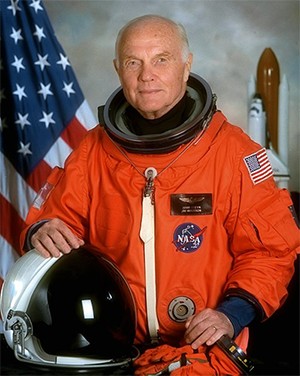
Pandemonium erupted. Newman panicked and cycled through about three different answers in quick succession, starting with "You are all missing the point. I am sorry. I won't agree to that, no. No. Under no circumstances." He then pivoted to saying he would agree to a test, but only if the lab could be proven to be "unbiased," before settling on the view that any further testing would be an insult to the "30 scientists" who had submitted affidavits in support of the machine. This was very obviously a bullshit answer, especially since it was hidden in the middle of several more lengthy rants about the various injustices done to Joe Newman and how "I am right, Senator, and I am going to change the laws, maybe after I am dead and gone, but I am going to stand my ground." By this point, several embarrassed energy executives, who had attended the hearings in case Newman was onto something, were seen slinking quietly out of the room.
Newman's support subsequently vanished and he never got his patent, congressional or otherwise (he insisted it didn't matter, since it was patented in Mexico, and the US had to recognize that under NAFTA). But don't go thinking the dream of perpetual motion is dead. More patent applications are filed across the world every year. It's a particularly popular subject in China, which now accounts for over half the world's applications. Which means it's only a matter of time before we get more congressional hearings on ways to fix this dangerous perpetual motion gap.
Top image: Kateryna Kon/Shutterstock